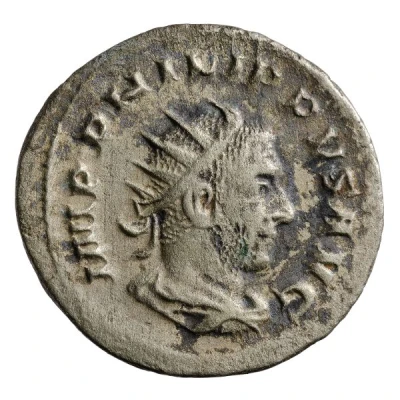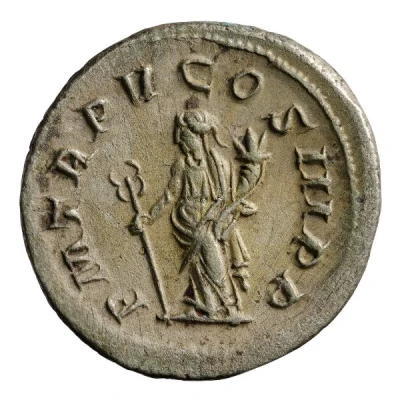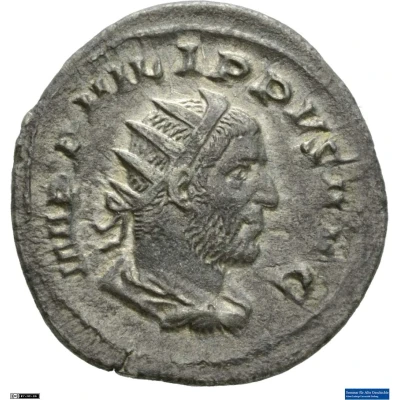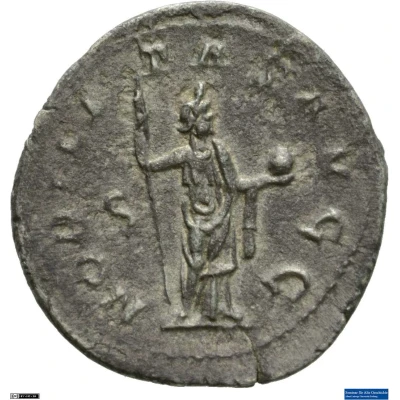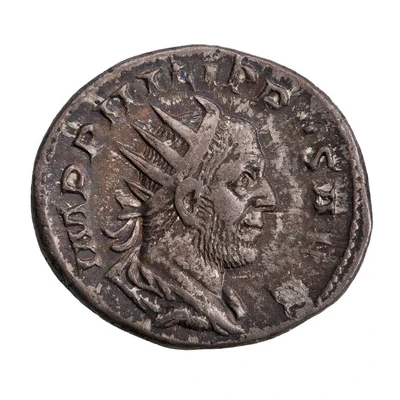
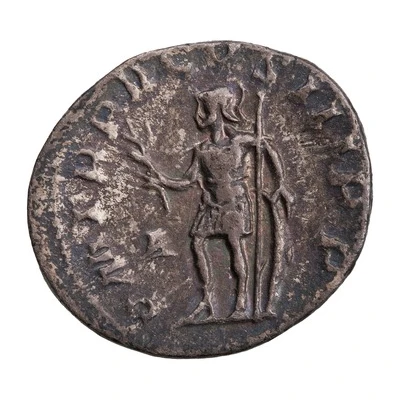

© American Numismatic Society (ANS)
Antoninianus - Philippus I P M TR P V COS III P P; Mars
248 year| Silver | 4.1 g | 21.5 mm |
| Issuer | Rome › Roman Empire (27 BC - 395 AD) |
|---|---|
| Emperor | Philip I (Marcus Iulius Philippus) (244-249) |
| Type | Standard circulation coin |
| Year | 248 |
| Value | Antoninianus (1) |
| Currency | Antoninianus, Reform of Caracalla (AD 215 – 301) |
| Composition | Silver |
| Weight | 4.1 g |
| Diameter | 21.5 mm |
| Shape | Round (irregular) |
| Technique | Hammered |
| Orientation | Variable alignment ↺ |
| Demonetized | Yes |
| Updated | 2024-10-05 |
| Numista | N#282061 |
|---|---|
| Rarity index | 97% |
Reverse
Mars, helmeted, standing left, holding branch in right hand and resting left hand on shield; spear against left arm.
Script: Latin
Lettering: P M TR P V COS III P P
Translation:
Pontifex Maximus, Tribunicia Potestate Quinta, Consul Tertium, Pater Patriae.
High priest, holder of tribunician power for the fifth time, consul for the third time, father of the nation.
Comment
Mass varies: 3.43–4.81 g;Diameter varies: 20–23 mm;
Example of this type:
American Numismatic Society (ANS)
Source:
Online Coins of the Roman Empire (OCRE)
Interesting fact
The Antoninianus coin , which features Philip I (also known as Philippus I) and Mars on the reverse, was minted during a time of significant economic and political change in the Roman Empire. The coin was issued during the third century AD, a period known for its high inflation, political instability, and military challenges. Despite these challenges, the Roman Empire continued to mint coins like the Antoninianus, which remained an important symbol of the empire's power and influence. It's also worth noting that the coin's design features Mars, the Roman god of war, which suggests that the coin may have been minted to commemorate a military victory or to promote the empire's military prowess. The inclusion of Philip I's title, "P M TR P V COS III P P," which means "Pontifex Maximus, Tribunicia Potestate, Consul for the third time, Father of the Fatherland," further highlights the coin's connection to the Roman state and its leadership.
